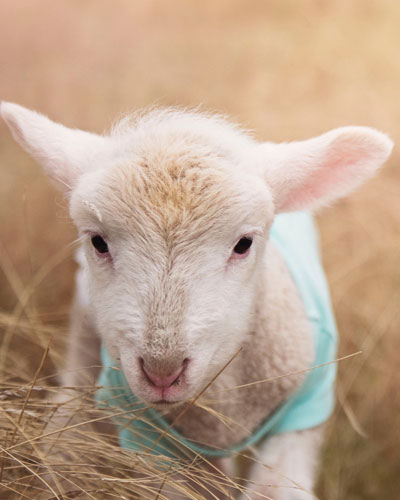 Lambing time is the most crucial part of the year for making your sheep business profitable. Lamb deaths from birth to 3 days old should be less than 7% however many farms range between 10- 25%.
Lambing time is the most crucial part of the year for making your sheep business profitable. Lamb deaths from birth to 3 days old should be less than 7% however many farms range between 10- 25%.
A major factor influencing mortality in neonate (young) lambs is ewe body condition; as this directly relates to lamb body weight, colostrum quality and quantity. It is therefore important to ensure ewes are at BCS 2.5 to 3.0, (so vertebral spinous processes only felt with pressure and transverse processes only felt with hard pressure), and they are on a rising plane of nutrition in the run up to lambing. Energy and protein blood profiles can be taken 2 to 3 weeks before lambing to ensure ewes are receiving the correct nutrition to help reduce cases of twin lamb disease.
Another major cause of neonatal mortality is watery mouth. These lambs typically are lethargic, salivate and have a distended abdomen. It is caused by Ecoli and picked up by ingestion. Treatment involves electrolytes and antibiotics but is often hopeless. Therefore the emphasis should be on prevention which involves keeping pens clean, (especially towards the end of the season), dipping navels with strong iodine and ensuring all lambs get enough good quality colostrum quickly. See below:
Always ensure colostrum is…
QUALITY
Ensure ewes in good BCS, if you’re uncertain as to the quality of colostrum; colostrum quality can be measured using a refractometer: aim for specific gravity >1.05. Only use sheep colostrum replacement (colostrum from a milking sheep farm will usually be better quality than powdered colostrum); cow colostrum can cause a fatal anaemia. Also remember to give your Clostridial and Pasteurella vaccine four to six weeks before lambing to ensure the lambs receive antibodies against these diseases. (Any ewes that haven’t had this vaccine before will need a course of two injections four to six weeks apart).
QUANTITY
200ml/kg within 18 hours of birth, with a maximum of 50ml/kg intake on each occasion.
Remember lambs in adverse weather conditions will require more colostrum or milk as more energy from their feed will be used to keep them warm.
QUICKLY
Within 2 hours of birth.
SQUEAKY CLEAN
Ensure ewe udders are clean and dry and the equipment to mix and administer colostrum is cleaned and disinfected between lambs.
QUANTIFY
We can also look if your lambs have received enough colostrum by blood testing any less than a week old.
Finally, there is continual pressure on antibiotic use. So to ensure we don’t end up with a world full of super bugs we need to be careful how we use antibiotics. Preventative use of antibiotics, such as blanket use of Spectam or Betamox LA for watery mouth needs to be reduced as this will actively select for resistance and there is pressure from Red Tractor Assurance to reduce this practice.
We recommend only using antibiotics….
-
- Towards the end of the lambing season, when the sheds have a build up of Ecoli.
-
- In triplets, when their ewe may have poorer quality and quantity of colostrum
- In lambs from ewes in poorer condition, as the quality and quantity of colostrum will be poorer.
Also remember entropion, where the lamb’s eyelid is inverted causing the eye to be held shut, tear staining and damage to the eye. This is a heritable condition so affected lambs should not be kept as replacements, ewes should not be used to breed replacements and consider ram choice if a large percent of flock are affected.
